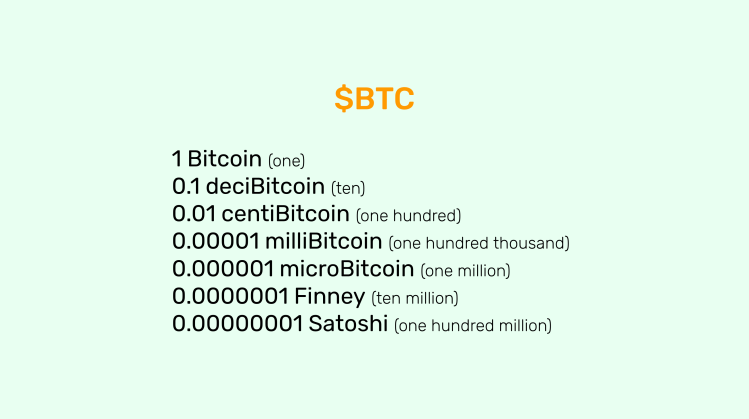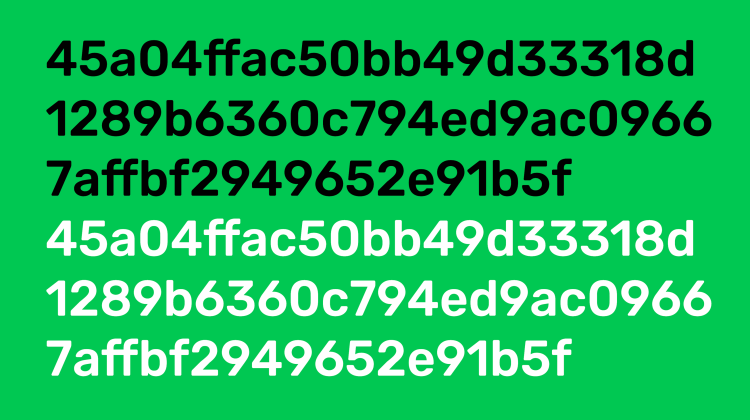Educational post: What are the denominations of BTC?
You can watch this educational content here:
When we use traditional currencies such as the dollar we are used to calling them "dollars and cents".
We are also accustomed to different names for different quantities of such currencies. These may be, in the case of the dollar, "one cent" for one hundredth of a dollar, "a nickel" for five cents, "a dime" for ten cents, and "a quarter" for twenty five cents.
The Units of Bitcoin
The same applies for cryptocurrencies as Bitcoin.
In Bitcoin, its native currency is called "bitcoin", but its symbol in the market and the economy is $BTC.
The Denominations of Bitcoin
However, the denominations of the cryptocurrency units of $BTC can be divided much more than traditional currencies. In fact, it is divided by one hundred million instead of the traditional one hundred in national currencies.
For machine purposes, developers and engineers have to use this atomic or minimal indivisible unit of $BTC to express its quantities.
Below is a list of the denominations of $BTC as used by programmers for machine and machine to machine computations:
1 Satoshi (one)
10 Finney (ten)
100 microBitcoin (one hundred)
100,000 milliBitcoin (one hundred thousand)
1,000,000 centiBitcoin (one million)
10,000,000 deciBitcoin (ten million)
100,000,000 Bitcoin (one hundred million)
As seen above, the minimal atomic denomination of $BTC is 1 Satoshi, which is a one hundred millionth of a $BTC. The name "Satoshi" was given to it in honor of Satoshi Nakamoto, the inventor of Bitcoin.
When you multiply 1 satoshi by ten you have a Finney, then a microBitcoin (one hundred), a milliBitcoin (one hundred thousand), a centiBitcoin (one million), a deciBitcoin (ten million), and finally a Bitcoin (one hundred million satoshis).
The Finney denomination is in honor of Hal Finney, the creator of the Bitcoin precursor RPOW, the first user of Bitcoin after Satoshi Nakamoto launched it in January of 2009, and arguably a fundamental contributor without whom Bitcoin would probably not exist due to his software contributions, ideas, and writings.
The Denominations in Human Readable Terms
For use by humans, and how it is expressed in the great majority of applications and crypto businesses, the above denominations are inverted to make it easier to process mentally.
Below is the list of Bitcoin denominations, but inverted:
1 Bitcoin (one)
0.1 deciBitcoin (ten)
0.01 centiBitcoin (one hundred)
0.00001 milliBitcoin (one hundred thousand)
0.000001 microBitcoin (one million)
0.0000001 Finney (ten million)
0.00000001 Satoshi (one hundred million)
It must be noted that the above expressions are quantitatively identical as in the previous section, it is just a different way of writing them.
The Possible Satoshi Unit as Money
When Bitcoin rallies to millions of dollars per $BTC, it is very possible, and it is already being discussed and used by many, that instead of using $BTC denominations for smaller transactions, there will be a switch to use satoshis as the name of the currency, or at least to denominate such transactions.
For example, if a transaction were for 0.00004351 $BTC, it could be expressed as 4,351 Satoshis or 4,351 "Sats" in its abbreviated form.
Thank you for reading this educational post!
Please remember to download Emerald here:



